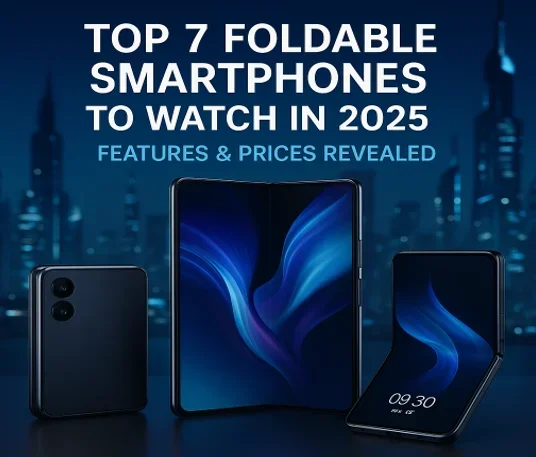Foldable smartphones have transformed from niche experiments to mainstream marvels, blending cutting-edge technology with innovative design. In 2025, the foldable market is hotter than ever, with major brands like Samsung, Google, OnePlus, and Oppo pushing the boundaries of what’s possible. These devices offer versatility, productivity, and style, whether you’re after a book-style tablet hybrid or a compact clamshell.
This comprehensive guide dives into the top 7 foldable smartphones to watch in 2025, detailing their features, specs, prices, and why they stand out. Let’s explore the future of mobile tech!
Why Foldable Smartphones Are the Future
Before we jump into the list, let’s talk about why foldables are stealing the spotlight. Unlike traditional slab phones, foldables offer dual functionality: compact portability when closed and expansive screens when open. They’re perfect for multitasking, gaming, content creation, and even replacing tablets for some users. Advancements in hinge mechanisms, display durability, and software optimization have made 2025 a pivotal year for foldables. Plus, with prices becoming more competitive, they’re no longer just for early adopters.
In this blog, we’ll cover:
- Detailed specs and features of the top 7 foldable smartphones.
- Official or expected pricing based on the latest data.
- Pros and cons to help you decide which device suits your needs.
- Insights into upcoming models and market trends.
Let’s get started with the top foldable phones to watch in 2025!
1. Samsung Galaxy Z Fold 7
Overview
Samsung continues to lead the foldable market, and the Galaxy Z Fold 7, expected to launch in July 2025, promises to refine its iconic book-style design. Building on the Z Fold 6’s success, this device aims to address user feedback with a slimmer profile, wider cover screen, and enhanced performance.
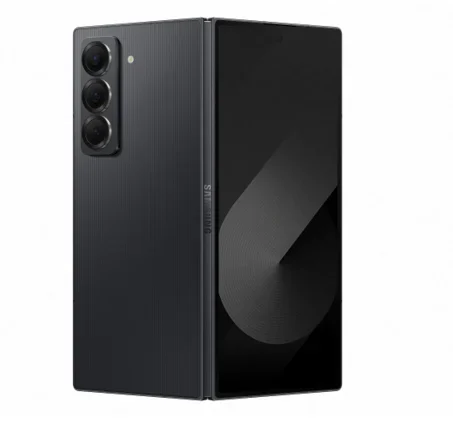
Key Features
Display: 6.5-inch cover AMOLED (120Hz, 2600 nits) and 8-inch inner AMOLED (120Hz, 2160 x 1856 resolution).
Processor: Snapdragon 8 Elite for Galaxy (7-core variant for efficiency).
Camera: 50MP main, 12MP ultrawide, 10MP telephoto (3x zoom), 10MP cover selfie, 4MP under-display inner selfie.
Battery: 4400mAh with 25W wired and 15W wireless charging.
Software: One UI 7 (Android 15) with Galaxy AI features like Sketch-to-Image and real-time translation.
Design: Thinner at 4.9mm when unfolded, IP48 water/dust resistance, no S Pen support for sleeker build.
Storage/RAM: 12GB RAM with 256GB, 512GB, or 1TB storage.
Why It Stands Out
The Z Fold 7 is expected to adopt the slimmer design of the Z Fold 6 Special Edition, making it more pocketable. Its wider cover screen improves usability when closed, and the Snapdragon 8 Elite ensures top-tier performance for gaming and multitasking. Samsung’s software, with split-screen capabilities and AI enhancements, makes it a productivity powerhouse.
Price
Starting at $1899 (256GB model).
Pros
- Larger, brighter displays with minimal crease.
- Robust multitasking software.
- Premium build quality.
Cons
- High price point.
- No S Pen support.
- Incremental upgrades over Z Fold 6.
2. Samsung Galaxy Z Flip 7
Overview
The Galaxy Z Flip 7, also slated for July 2025, is Samsung’s stylish clamshell foldable. It focuses on affordability and portability while introducing a larger cover screen and improved battery life.
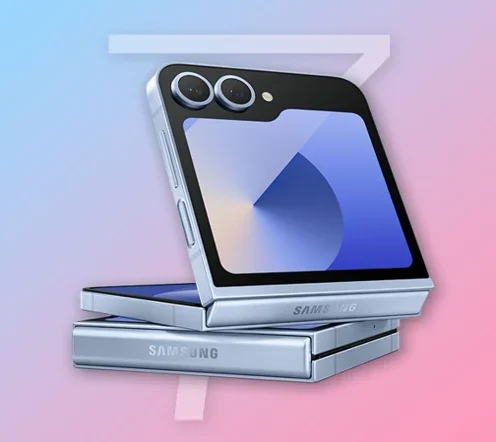
Key Features
- Display: 4-inch cover AMOLED (120Hz) and 6.85-inch inner AMOLED (120Hz, 1080p).
- Processor: Exynos 2500 (or Snapdragon 8 Elite in some regions).
- Camera: 50MP main, 12MP ultrawide, 10MP inner selfie.
- Battery: 4000mAh with 25W wired and 15W wireless charging.
- Software: One UI 7 (Android 15) with Flex Mode for hands-free use.
- Design: IP48 rating, vegan leather back options, 6.9mm unfolded thickness.
- Storage/RAM: 12GB RAM with 256GB or 512GB storage.
Why It Stands Out
The Z Flip 7’s larger cover screen makes it more functional without unfolding, perfect for quick tasks like replying to messages or taking selfies. Its Exynos 2500 chipset offers solid performance at a lower cost, and the clamshell design remains a fashion statement.
Price
Starting at $1099 (256GB model).
Pros
- Stylish, compact design.
- Improved cover screen functionality.
- Competitive pricing for a foldable.
Cons
- Camera system lags behind flagships.
- Battery life could be better.
- Limited multitasking compared to book-style foldables.
3. Google Pixel 10 Pro Fold
Overview
Google’s Pixel 10 Pro Fold, expected in September 2025, builds on the Pixel 9 Pro Fold’s success. It’s a book-style foldable with a focus on refined design, AI-driven features, and exceptional cameras.
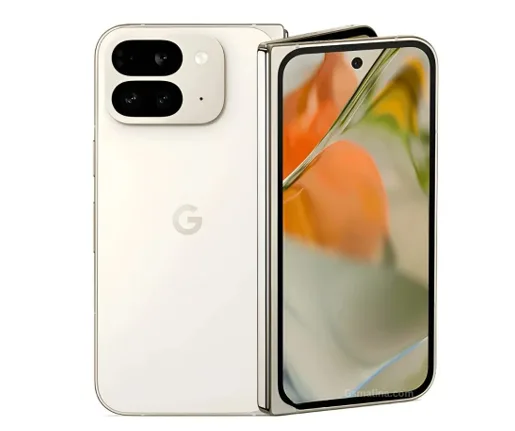
Key Features
- Display: 6.3-inch cover OLED (120Hz, 2700 nits) and 8-inch inner OLED (120Hz, 2076 x 2152).
- Processor: Tensor G5 chipset.
- Camera: 48MP main (f/1.7, OIS), 10.8MP 5x telephoto, 10.5MP ultrawide, dual 10MP selfie cameras.
- Battery: 4650mAh with 21W wired and 7.5W wireless charging.
- Software: Android 16 with 7 years of updates, AI features like Pixel Screenshots and Gemini Live.
- Design: IPX8 water resistance, matte back, 239g weight.
- Storage/RAM: 16GB RAM with 256GB or 512GB storage.
Why It Stands Out
The Pixel 10 Pro Fold offers the best cameras on a foldable, leveraging Google’s computational photography. Its clean Android experience and long-term software support make it a future-proof choice. The wider outer display improves ergonomics for one-handed use.
Price
Starting at $1799 (256GB model).
Pros
- Top-tier camera performance.
- Clean, bloat-free Android experience.
- Seven years of software updates.
Cons
- Expensive for incremental upgrades.
- No dust resistance.
- Tensor G5 may not match Snapdragon performance.
4. OnePlus Open 2 (Oppo Find N5)
Overview
The OnePlus Open 2, likely a rebranded Oppo Find N5, is set to launch in Q1 2025. It’s poised to be the thinnest foldable yet, with premium specs and global availability.
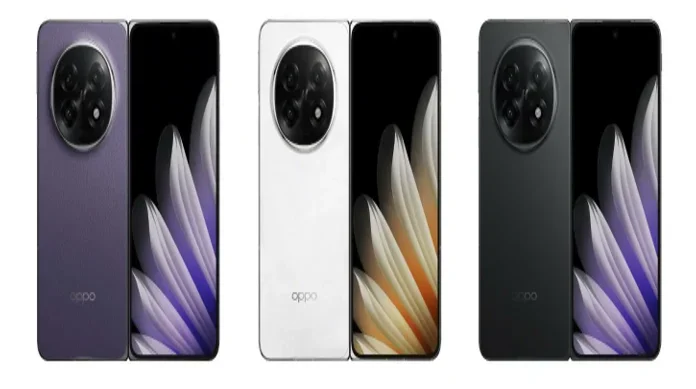
Key Features
- Display: 6.3-inch cover AMOLED (120Hz) and 7.8-inch inner AMOLED (120Hz).
- Processor: Snapdragon 8 Elite.
- Camera: 50MP main, 50MP periscope telephoto, 48MP ultrawide, 32MP front.
- Battery: 5700mAh with 67W fast charging.
- Software: OxygenOS (Android 15) with stylus support.
- Design: 3.7mm unfolded, titanium body, IPX9 water resistance.
- Storage/RAM: 16GB RAM with 512GB storage.
Why It Stands Out
The Open 2’s ultra-thin design (3.7mm unfolded) sets a new standard, and its massive 5700mAh battery ensures all-day usage. The periscope telephoto lens and stylus support make it a versatile choice for creatives and professionals.
Price
Starting at $1699 (estimated).
Pros
- Thinnest foldable design.
- Large battery with fast charging.
- Excellent camera system
Cons
- Limited availability in some regions.
- Higher price than original Open.
- Stylus sold separately.
5. Motorola Razr Ultra 2025
Overview
The Motorola Razr Ultra 2025, launching in May 2025, is a clamshell foldable with a focus on large displays and premium performance. It’s a step up from the Razr Plus 2024.

Key Features
Display: 4-inch cover OLED (120Hz) and 7-inch inner pOLED (120Hz).
- Processor: Snapdragon 8 Elite.
- Camera: 50MP main, 13MP ultrawide, 32MP inner selfie.
- Battery: 4200mAh with 30W wired and 15W wireless charging.
- Software: Android 15 with Moto AI features.
- Design: IPX8 water resistance, vegan leather options.
- Storage/RAM: 16GB RAM with 256GB or 512GB storage.
Why It Stands Out
The Razr Ultra 2025’s 7-inch inner display is among the largest for clamshells, ideal for media consumption. Its 4-inch cover screen supports full apps, reducing the need to unfold. The Snapdragon 8 Elite ensures flagship-level performance.
Price
Starting at $999 (256GB model, estimated).
Pros
- Large, functional cover screen.
- Competitive pricing.
- Stylish design with vegan leather.
Cons
- Shorter software support (3 years).
- No telephoto camera.
- Battery life average.
6. Honor Magic V3
Overview
The Honor Magic V3 is already available in some markets and remains a top contender in 2025 for its ultra-slim design and flagship specs. It’s a book-style foldable that rivals Samsung and Google.
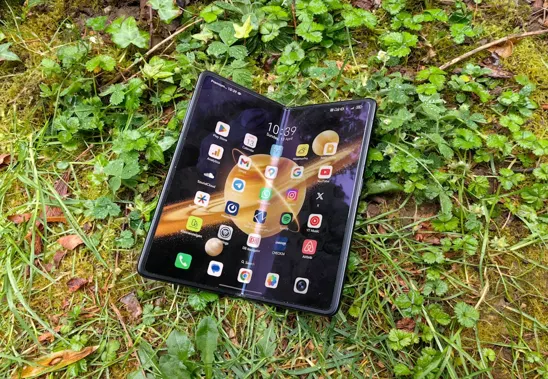
Key Features
Display: 6.34-inch cover OLED (120Hz, 5000 nits) and 7.92-inch inner OLED (120Hz).
Processor: Snapdragon 8 Gen 3.
Camera: 50MP main, 50MP periscope telephoto, 40MP ultrawide, 20MP front.
Battery: 5150mAh with 66W wired and 50W wireless charging.
Software: MagicOS 8 (Android 14, upgradable to 15).
Design: 9.2mm folded, 225g, IPX8 water resistance.
Storage/RAM: 12GB or 16GB RAM with 256GB or 512GB storage.
Why It Stands Out
At just 4.35mm unfolded, the Magic V3 is the slimmest foldable available in the West. Its 5000-nit cover screen is the brightest on the market, and the camera system delivers flagship-level performance.
Price
Starting at $1799 (256GB model)
Pros
- Ultra-slim and lightweight.
- Bright, high-quality displays.
- Strong camera performance.
Cons
- Limited U.S. availability.
- Software less polished than competitors.
- No dust resistance.
7. Vivo X Fold 4
Overview
The Vivo X Fold 4, expected in Q1 or Q2 2025, is a book-style foldable with a massive battery and sleek design. Vivo is known for pushing boundaries in the foldable space.

Key Features
- Display: 6.4-inch cover AMOLED (120Hz) and 8-inch inner AMOLED (120Hz).
- Processor: Snapdragon 8 Elite.
- Camera: 50MP main, 50MP ultrawide, 12MP periscope telephoto, 32MP front.
- Battery: 6500mAh with 80W wired and wireless charging.
- Software: Funtouch OS (Android 15).
- Design: 8.x mm folded, IPX8 water resistance, ~210g.
- Storage/RAM: 16GB RAM with 512GB storage.
Why It Stands Out
The X Fold 4’s 6500mAh battery is the largest in any foldable, promising multi-day usage. Its lightweight design and powerful camera system make it a strong competitor, especially in markets where Vivo is prominent.
Price
Starting at $1599 (estimated).
Pros
- Massive battery capacity.
- Lightweight for a book-style foldable.
- High-performance chipset.
Cons
- Limited global availability.
- Funtouch OS may not appeal to all.
- Pricing speculative until launch.
Market Trends and What to Expect in 2025
The foldable smartphone market is evolving rapidly. Here are key trends to watch:
- Thinner Designs: Brands like Oppo and Honor are prioritizing ultra-slim profiles, with unfolded thicknesses dropping below 5mm.
- Larger Batteries: Vivo and Oppo are leading with batteries exceeding 5000mAh, addressing battery life concerns.
- Improved Durability: IPX8 and IPX9 ratings are becoming standard, though dust resistance remains a challenge.
- Affordable Options: Samsung’s rumored Galaxy Z Flip 7 FE (~$799) and Motorola’s budget-friendly Razr models are making foldables more accessible.
- AI Integration: AI features like Google’s Gemini Live, Samsung’s Sketch-to-Image, and Motorola’s AI wallpaper generator are enhancing user experiences.
- Global Expansion: Brands like Vivo and Oppo are eyeing wider releases, though U.S. availability remains limited for some.
According to Display Supply Chain Consultants, Samsung and Huawei dominate with a 70% share of foldable panel procurement, but Motorola and Honor are gaining ground. The market is expected to see 32 models in 2025, down from 41 in 2024, as brands focus on quality over quantity.
How to Choose the Right Foldable for You
With so many options, here’s a quick guide to picking the perfect foldable:
Budget: If you’re under $1000, consider the Motorola Razr Ultra 2025 or wait for the Galaxy Z Flip 7 FE.
Book-Style vs. Clamshell: Book-style foldables (Z Fold 7, Pixel 10 Pro Fold) are ideal for productivity, while clamshells (Z Flip 7, Razr Ultra) prioritize portability.
Camera Quality: Google Pixel 10 Pro Fold and Honor Magic V3 lead in photography.
Battery Life: Vivo X Fold 4 and OnePlus Open 2 offer the best endurance.
Software: Google’s clean Android and Samsung’s One UI are top picks for usability.
Conclusion
Foldable smartphones in 2025 are more exciting than ever, combining innovative designs with flagship performance. The Samsung Galaxy Z Fold 7 and Z Flip 7 cater to premium and style-conscious users, while the Google Pixel 10 Pro Fold excels in photography and software. The OnePlus Open 2 and Vivo X Fold 4 push boundaries with thinness and battery life, and the Honor Magic V3 offers a sleek alternative. For budget buyers, the Motorola Razr Ultra 2025 delivers premium features at a lower price.
Whether you’re a tech enthusiast or a professional seeking productivity, there’s a foldable for you. Stay tuned for these launches, and let us know in the comments which foldable you’re most excited about! For the latest updates, check official brand websites.
Note: Prices and specs for unreleased devices are based on leaks and estimates; official details may vary.
Disclaimer
The information in this blog post about the top 7 foldable smartphones to watch in 2025 is based on official data, leaks, and industry estimates available as of May 07, 2025. Specifications, features, and prices for unreleased devices, such as the Samsung Galaxy Z Fold 7, Z Flip 7, Google Pixel 10 Pro Fold, OnePlus Open 2, Motorola Razr Ultra 2025, and Vivo X Fold 4, are subject to change upon official announcement. Actual performance, availability, and pricing may vary by region and retailer.
Readers are encouraged to verify details through official brand websites or trusted sources before making purchasing decisions. The author and publisher are not responsible for any inaccuracies or changes in product information after publication.
FAQs on Top 7 Foldable Smartphones in 2025
Are foldable smartphones durable enough for everyday use?
Absolutely, they’ve come a long way! In 2025, foldables like the Samsung Galaxy Z Fold 7 and Honor Magic V3 boast IPX8 or IPX9 water resistance, meaning they can handle splashes or even a quick dunk. Hinge mechanisms are sturdier than ever, with brands like Samsung and Oppo testing their hinges for hundreds of thousands of folds. That said, they’re still not as tough as traditional phones against dust or drops, so a good case and careful handling are smart moves.
Which foldable phone has the best camera in 2025?
If you’re a photography buff, the Google Pixel 10 Pro Fold is your best bet. Its 48MP main sensor, 10.8MP 5x telephoto, and Google’s awesome computational photography make it a standout for crisp, vibrant shots, even in low light. The Honor Magic V3 and OnePlus Open 2 also impress with their 50MP main cameras and periscope telephoto lenses, but Google’s software magic gives it the edge.
Are foldable phones worth the high price tag?
It depends on what you value! Foldables like the Samsung Galaxy Z Flip 7 (starting at ~$1099) or Motorola Razr Ultra 2025 (~$999) are more affordable and great for style-conscious users who want a compact device. Book-style foldables like the Vivo X Fold 4 or Z Fold 7 (~$1599–$1899) are pricier but offer tablet-like screens for multitasking and productivity. If you love cutting-edge tech and use your phone for work or media, the investment can be worth it. Budget shoppers might want to wait for deals or check out the rumored Z Flip 7 FE.
Can I use a foldable phone for gaming and multitasking?
Oh, you bet! Book-style foldables like the OnePlus Open 2 and Samsung Galaxy Z Fold 7 are gaming and multitasking beasts, thanks to their large inner screens and powerful chips like the Snapdragon 8 Elite. You can run multiple apps side-by-side, play graphically intense games like Genshin Impact, or even use them as mini laptops with a keyboard. Clamshells like the Z Flip 7 are less ideal for multitasking but still handle gaming well with their 120Hz displays.
Will foldable phones be available worldwide in 2025?
Most of the top foldables, like the Samsung Galaxy Z Fold 7, Z Flip 7, and Google Pixel 10 Pro Fold, will be widely available in markets like the U.S., Europe, and Asia. However, some models, like the Vivo X Fold 4 and Honor Magic V3, may have limited availability outside Asia due to regional restrictions. The OnePlus Open 2 is expected to have broader global reach than its predecessor. Always check with local retailers or the brand’s official website for availability in your country!
Also Read
Google’s NotebookLM Goes Mobile: New Android and iOS Apps Unveiled!

